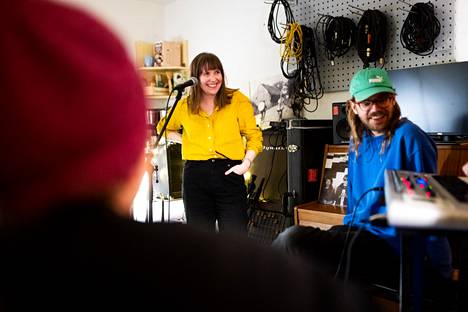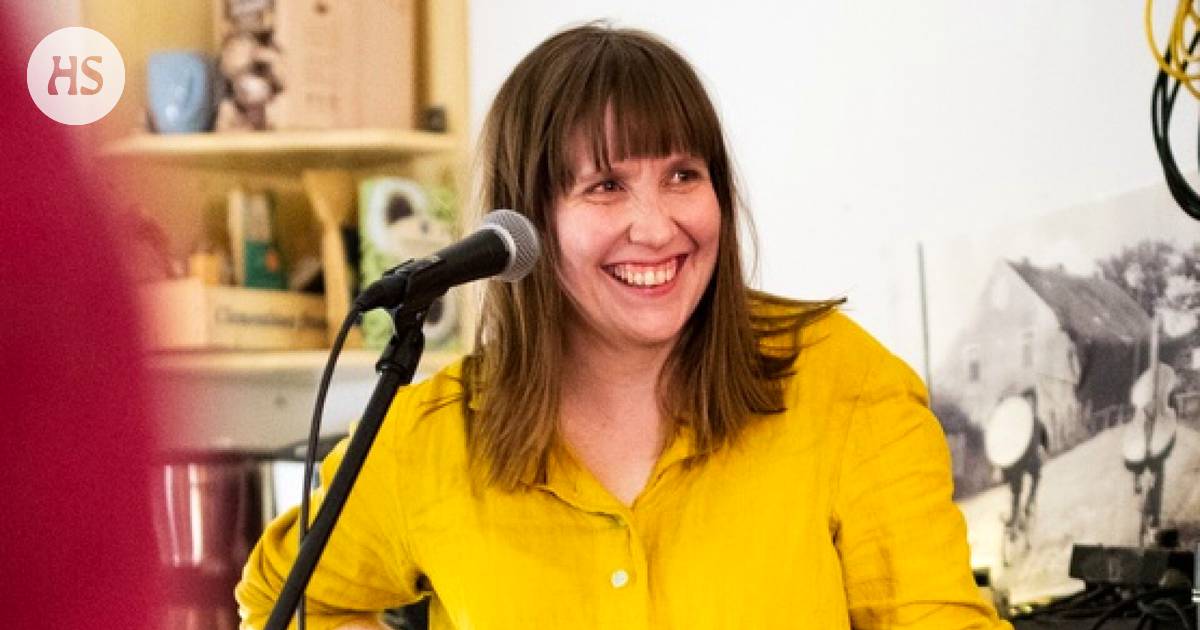This one the year’s Teosto award is shared between three. Finland’s biggest music award will be given to them Drama Helmin, Mikko Sarvantee mixed Sanna Åhvenjärvi and Tapio Lappalainen the works.
The award is one of the largest art awards in the Nordic countries. Its total sum of 40,000 euros will be divided equally among the winning works.
Prize causes an unusual situation for one of the awardees, Draama-Helm. The rapper, who has already released three albums, has decided to practice his performance in honor of the award with a special band.
The group consists of the same musicians with whom Draama-Helmi has been making music for years. Up until now, he has usually done the gigs alone with his laptop.
Drama Helmi or Helmi Kajaste.
Draama-Helmi, by real name Helmi Kajasteand his working group was awarded for having appeared last year Drama-Helm on the porch -album songs.
The basics say, among other things, that on the album Draama-Helmi has reached “a state of freedom and creative expression that is vital for an artist, where Federico Garcia Lorcan a world reminiscent of poetry meets murder podcasts in a new and unprecedented way”.
Kajaste says he is confused by the attention.
“I’ve always said that music is a hobby for me, and now that hobby comes into a bit of an embarrassing light when such a great award was given as recognition and nice words are said about the quality of the work,” he says.
”
“I haven’t had such a conversation with myself that I want this to spread.”
I echo characterizing it as a hobby is only partly an exaggeration, because even though he has been writing and performing his own songs for ten years, he is actually an architect by training. Until the summer of 2024, Kajaste has skipped building design because he is doing his dissertation.
In music, Kajaste has strictly adhered to his own control and the do-it-yourself principle. He doesn’t have a contract with any record company and he doesn’t have a gig seller, let alone a manager. First album Drama-Helm’s mistake appeared in 2015, and the second album Drama-Helm in the light of people two years later. The Helmi-Levyt company, which despite its name is not Kajaste’s own company, has also released two of the albums as vinyl editions.
His music cannot be found on Spotify or other major streaming services, but on Bandcamp and partly also on YouTube, although Kajaste has not put them there himself.
“I don’t want my music on Spotify, even though it’s a good tool if you want to get to know new music,” says Kajaste. “But putting your music out there is also a wish for it to grow and spread, and I haven’t had a conversation with myself that I want this to spread.”
Of everything despite this, Draama-Helmi has found his audience “through trash radio”, as he says himself, and gained appreciation for his unique music.
It is often referred to as rap or spoken word. Kajaste leans more towards rap, although he also understands where the spoken word character comes from.
“When I started making songs, I tried to be a whiny rapper, but it sounded kind of weepy with my voice. I gave up and started rapping like I talk, and it becomes that spoken word feel. Maybe I rap in a lower voice than when I speak, because I creak more when I speak,” he says.
“I see a lot of effort to make it sound effortless and as if they seemed invented in that moment.”
In Draama-Helm’s songs, the texts are tightly linked to the music and rhythm, and therefore, in Kajaste’s opinion, they cannot be considered pure spoken word.
Kajaste says that he started making songs in the spring of 2013, when he was about to graduate as an architect. The rush was gone, and he planned to clean his apartment before work.
“It wasn’t fun, so I decided to start rapping instead.”
Kajaste was particularly fond of 1990s rap and its self-ironic threat, which was practiced by, among others, A Tribe Called Quest and Slick Rick. On the other hand, he liked many other styles of music.
“Actually, I wanted to make blues, but I couldn’t play, and learning even the simplest chords was too long a project for that moment of avoiding cleaning.”
”
“I didn’t like cleaning, so I decided to start rapping.”
Drama Helmin the music eventually became some kind of fusion of old rap, blues, old beat and experimental electronic music. All of them also belong to the award-winning Drama-Helm on the porch on the disc.
The combination of music and text and Kajasteen’s Flow is fascinating. The usual rap clichés shine in their absence, and the dark-toned stream of consciousness is sometimes interrupted by surprising, absurd and humorous comments and word choices.

Helmi Kajaste and Joonas Siren practiced for the performance at the Teosto award ceremony on Monday.
Kajaste likes to give credit for the end result to the composers and players in his group, none of whom are full-time musicians. In some songs, Kajaste has also composed the music himself. He has found it more pleasant to make songs with his friends than to approach “some stranger whose style I admire”.
Ultimately, however, Kajaste is Draama-Helm’s artistic director.
“In a way, this is a solo project that starts from my vision, and it will be carried out under my leadership. Almost all music makers have also offered songs that I haven’t been able to do anything about.”
Creative the process of the work interests Kajasta, and he believes that he got the tools to visualize it from his architectural studies. Although music has gone along as a hobby, Kajaste has also applied his way of thinking to writing.
His book was published in 2020 Build, suffer and forget, which discussed architecture and cinema. Kajaste continues the same theme in his dissertation under work, the topic of which is the concept of border in architecture.
Kajaste has been an active film enthusiast for a long time, and participates in the activities of Montaas, a movie club for tea lovers. So you can safely ask him what architecture, music and cinema have in common.
“Now I’m not going to give any horinatheory answer to this, but rather that all of them progress in time.”
He can also easily answer the most common questions asked to architects, such as whether new skyscrapers will spoil Helsinki (“when a large area is planned and built at once, it is rarely beneficial to the vibrancy of the area”) and whether it is bad that Helsinki’s beaches are built over (“if it means privatizing the beaches , then I don’t support that”).
”
“I’m not going to start giving any theoretical answers to this.”
On it’s quite unlikely that Helmi Kajaste would leave her career as an architect and throw herself into being a full-time Draama-Helm and forget her strong principles of do-it-yourself activity, control of one’s own expression and the freedom it brings.
“This music thing has never been planned for the terribly far future, and it’s been like this for ten years now. It has been a surprise that it has lasted this long.”
The Teosto award may still change the plans a little.
“I had thought that I would retire from this when these three records were done, because in retrospect they are a trilogy. Now I feel a bit the same as I did ten years ago after completing my diploma thesis. That we get jealous if something comes from somewhere,” he says.
“But I can quite well do both of these things ten or twenty years from now. If I don’t think that the music thing should expand somewhere, then I can do it on a whim, just like now.”
Teosto awards of 2023
-
This year, the Teosto award was divided between three works.
-
The award went to Helmi Kajaste and the work of the working group on the Draama-Helm album Draama-Helmi kuisti, Mikko Sarvante’s compositions on the Mikko Sarvanne Garden album The white storm of awakening and a joint composition by Sanna Ahvenjärvi and Tapio Lappalainen Water.
-
The value of the prize, awarded annually, is 40,000 euros, and it can be divided between several works.
-
If the prize is awarded to only one work, the prize amount is 25,000 euros.
-
The winners were chosen by a jury, which includes the 2022 Teosto award winners Cecilia Damström, Linda Fredriksson and Yona, as well as Yle’s head of music programs Miikka Maunula and the general director of the Finnish National Opera and Ballet, Gita Kadambi.
